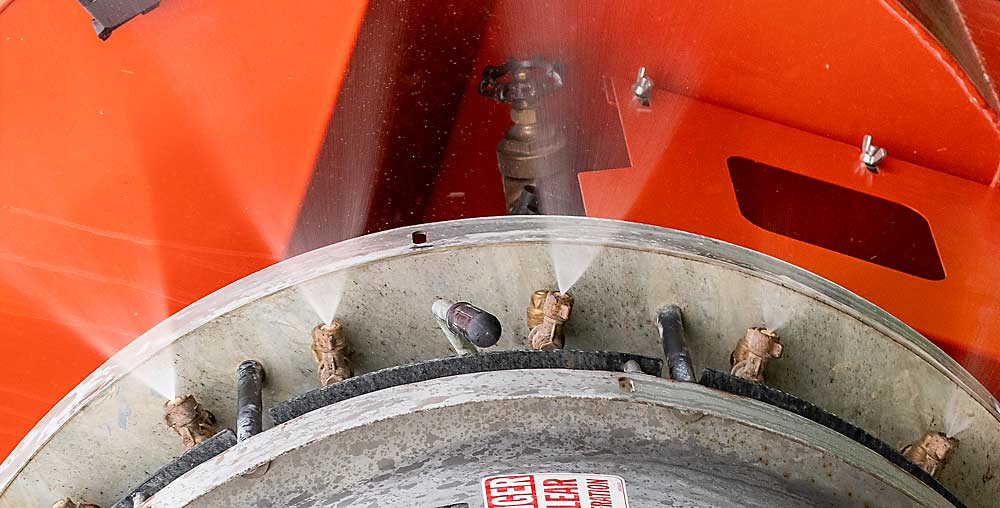
Pacific Northwest tree fruit growers, packers and shippers must navigate the ever-changing landscape of pesticide regulations and maximum residue limits (MRLs) to safely and economically produce and market their fruit. With harvest season here, MRLs in destination markets are top-of-mind for field and export managers. The Northwest Horticultural Council (NHC) recently refreshed its one-stop shop for tree fruit MRLs and made the online database better than ever.
As part of our mission to provide assistance to the pear, apple and sweet cherry industries of the region, the NHC has tracked MRLs for products important to tree fruit production since before 1980. At that time, the paper-bound NHC Export Manual listed about a dozen or so chemistries and associated tolerances, primarily for European markets. No centralized database existed, so our staff meticulously sought out and entered each MRL by hand.
As the decades passed, the list of countries and MRLs grew. The paper system, like most in the 1990s, began a migration to the World Wide Web. By the mid-aughts, our Export Database was fully online. The investments by the NHC grew commensurately to reach the complicated nature of the database we offer growers and shippers today.
But like any webpage in its teenage years, with all the glitches that come with adolescence, the MRL directory needed an upgrade. Thanks to a grant from the U.S. Department of Agriculture Foreign Agricultural Service’s Technical Assistance for Specialty Crops program, the online database received a complete redesign and was relaunched this spring.

Our streamlined database now tracks more than 15,000 MRLs for nearly 100 pesticides used to produce and store tree fruit in the Pacific Northwest. It includes the United States, Codex and 60 individual countries’ pesticide residue limits for pears, apples and sweet cherries. The Codex database was established by the United Nations in 1963, with the intent of harmonizing MRLs internationally. Some countries utilize Codex MRLs for certain pesticides for which their own regulatory bodies may not have established values.
David Epstein, vice president for scientific affairs at the NHC, said tree fruit producers must be knowledgeable of each destination country’s established MRLs, each pesticide’s efficacy in controlling a range of pests, and how to best time application throughout the growing season to be able to meet each country’s MRL regulations. Annually, the NHC’s science advisory committee, made up of 20 industry experts, identifies and reviews products of importance to the industry, and staff makes the necessary updates to the database.
A major goal of the rebuild was to ensure a continued link to Washington State University’s Decision Aid System (DAS), which delivers comprehensive, time-sensitive information for pest management of Pacific Northwest tree fruits and links directly to the NHC’s MRL database for each designated foreign export market. Epstein said without the grant funding, the continuity of connection from the NHC’s database to the DAS platform would have crashed.
To make the necessary fixes and add new coding, we tapped Brad Petit, a software developer and expert in the DAS platform at WSU’s Tree Fruit Research and Extension Center in Wenatchee. Petit understood the deficiencies already popping up in our platform, because he helped build the original system in 2007 under its creator, Vince Jones, a professor emeritus of entomology at WSU.
In addition to maintaining the connection to DAS and increasing user friendliness, we rebuilt the MRL database using the latest web and software technologies. Petit said this not only fixed current software issues but makes it easier to maintain, update and add to the system, as well as optimize it for both desktop and mobile web browsers.
Tim Pitz of Mount Adams Orchards serves on the NHC’s pesticide subcommittee, which provided us feedback during beta testing following the rebuild. He called the revamped version “a great tool that is easy to use, works well and looks awesome.”
The days of paper spreadsheets filling thick binders may be in the past, but the NHC’s new and improved online MRL database will continue to serve the tree fruit industry of the Pacific Northwest for another decade and beyond.
Visit mrldb.nwhort.org to access the revamped MRL database, or visit the NHC’s Export Manual (nwhort.org/export-manual) for more information.
—by Dan Langager
Dan Langager is the technical communications manager of the Northwest Horticultural Council. Based in Yakima, Washington, the NHC represents the growers, packers and shippers of apples, pears and cherries in Washington, Oregon and Idaho on federal and international policy and regulatory issues.






Leave A Comment